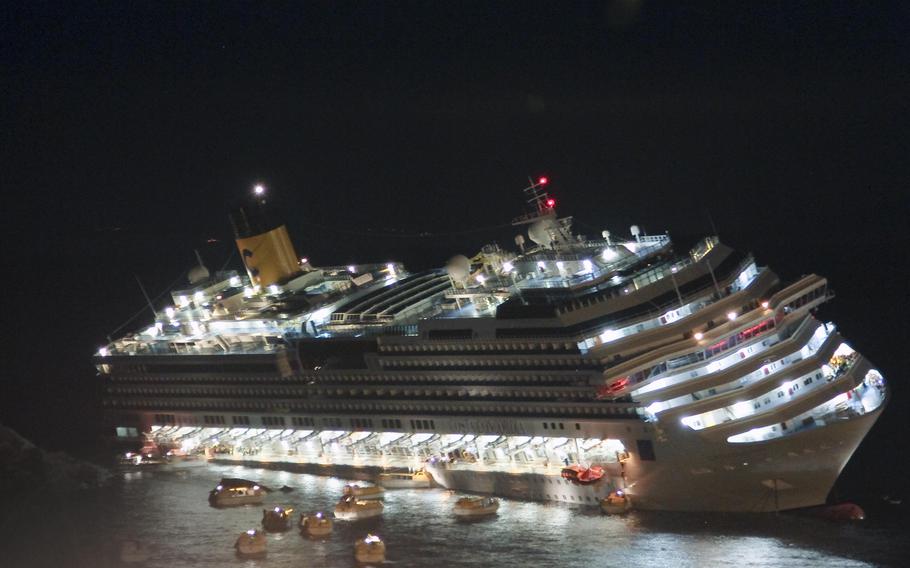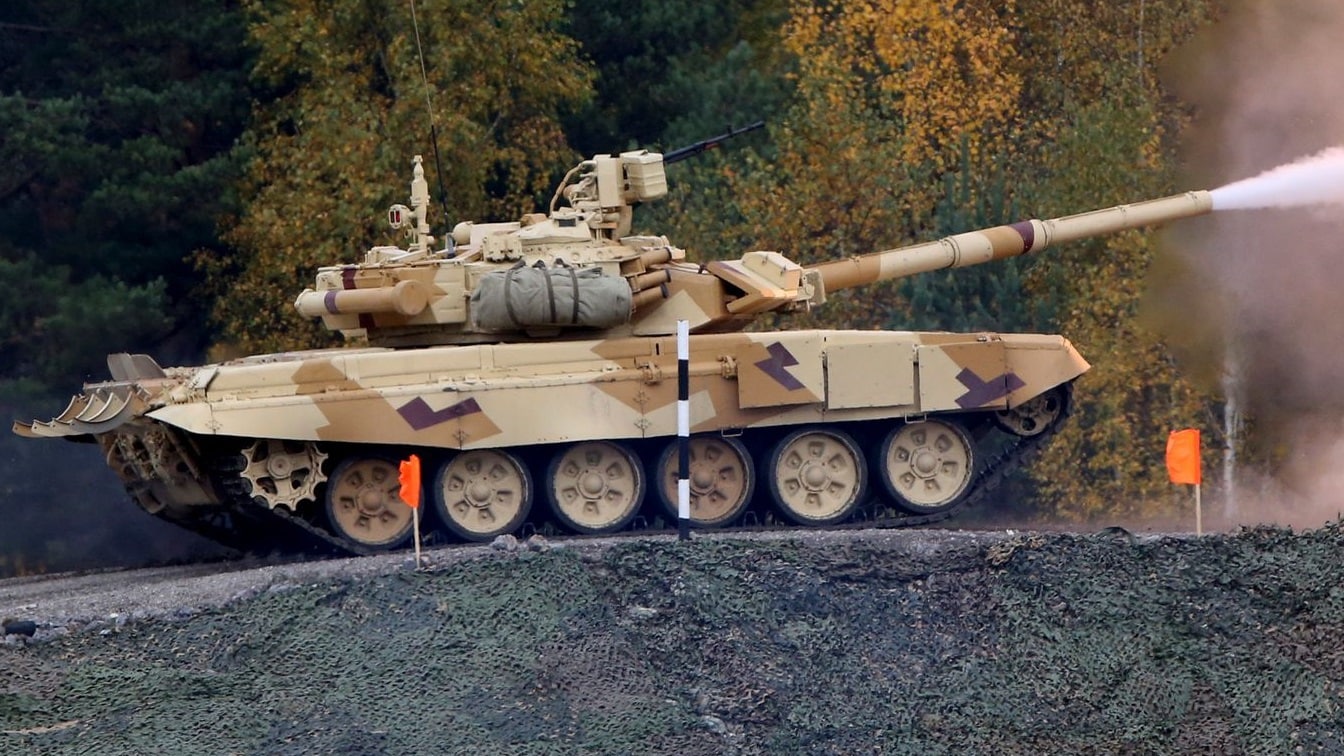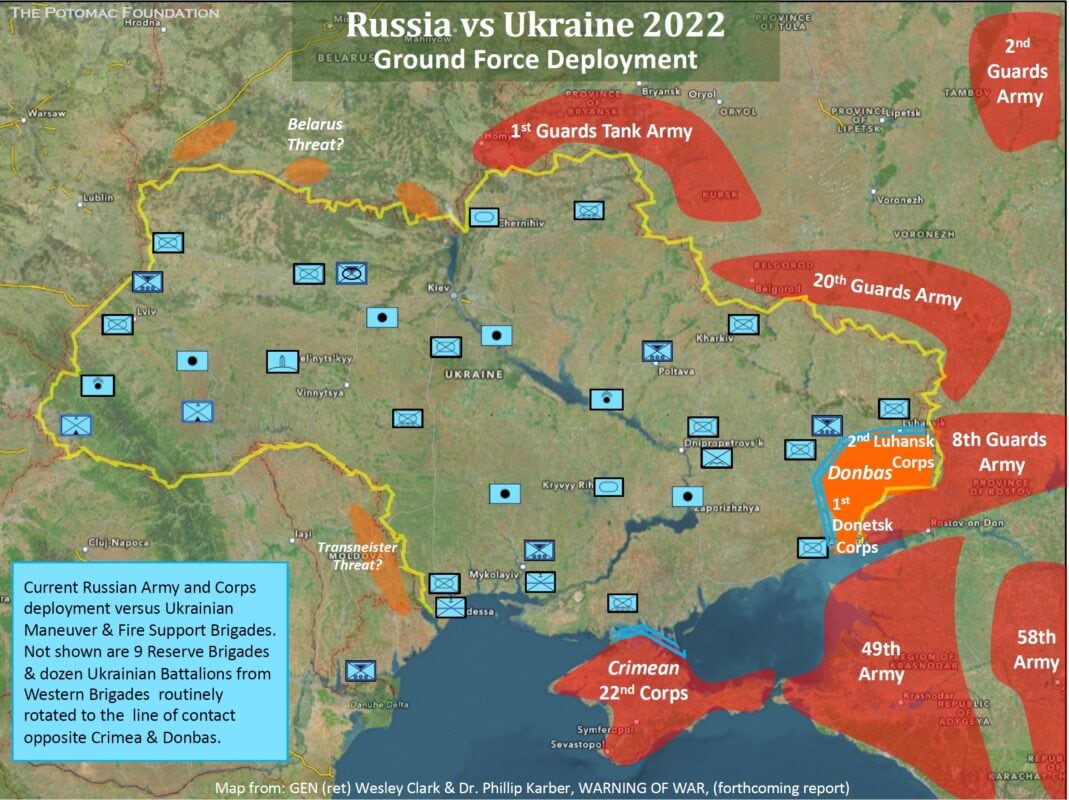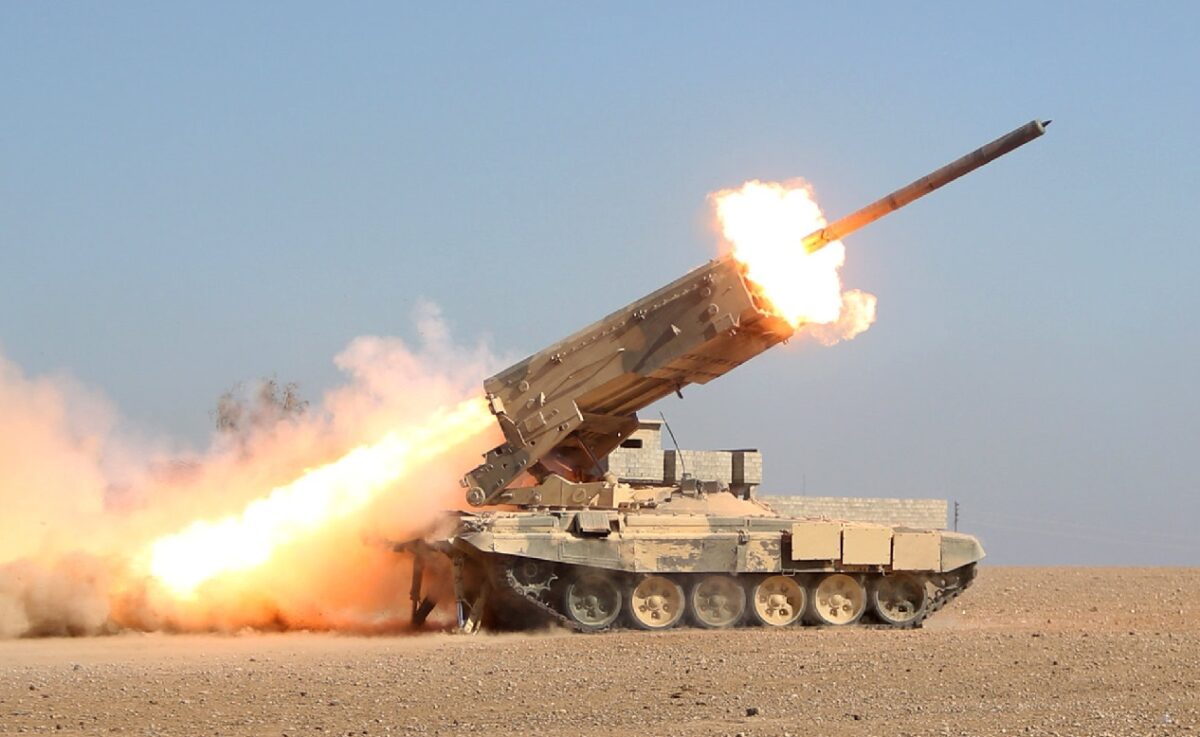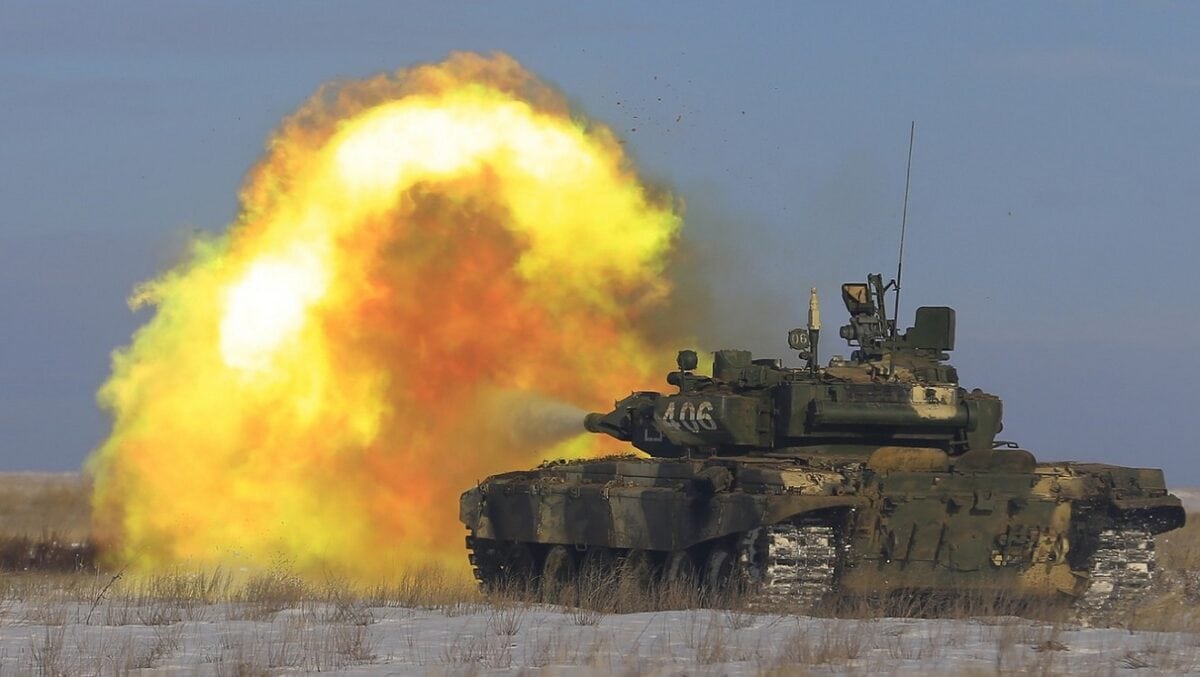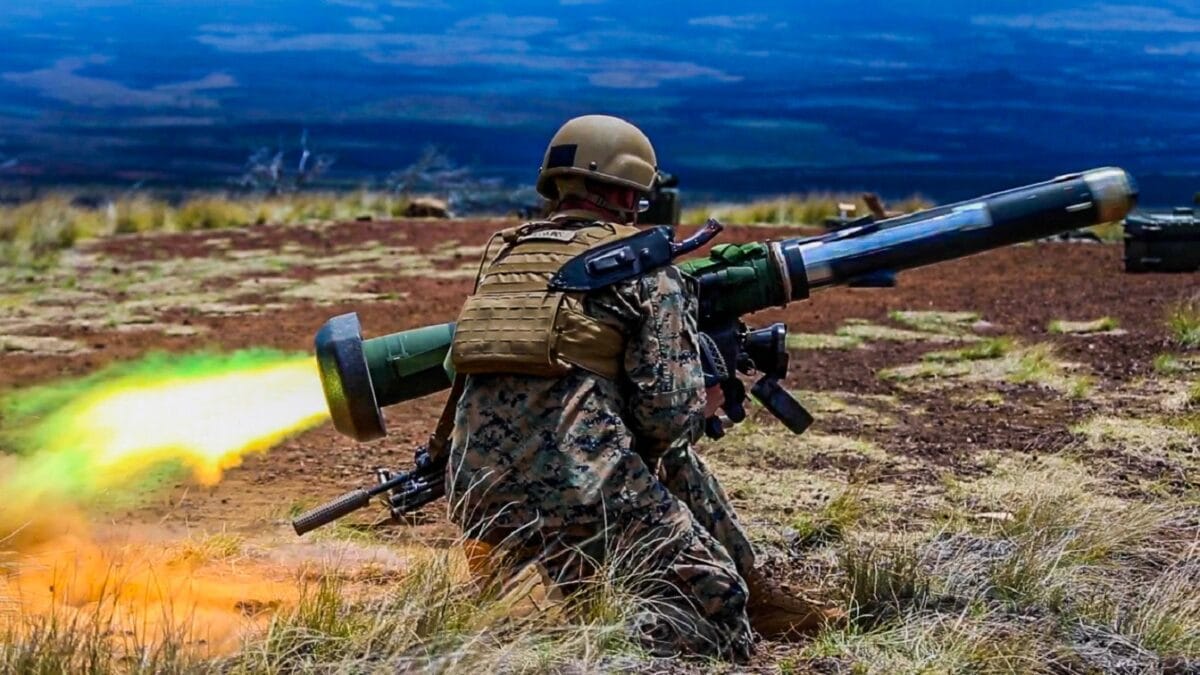Police Brutality Against Voters? The 2017 Catalan Independence Referendum
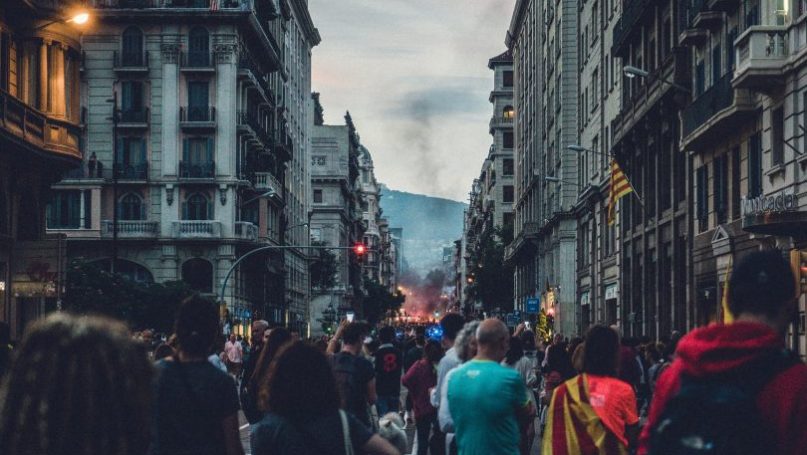
On the 1st of October 2017, the Spanish constitutional crisis in Catalonia came to a showdown between the independence movement and the central government. The confrontation had been in the making since 2010 and aimed at liberation from Madrid. On that day, the Catalan government conducted a ‘legal and binding [independence] referendum’ (Deutsche Welle, 2016b), which had been prohibited by the Tribunal Constitucional (TC), the Constitutional Court of Spain. Despite this, the vote proceeded and was disrupted by 10,000 Policía Nacional (National Police Force) and Guardia Civil (Civil Guard) officers on the orders of the Spanish government (BBC, 2017e; March, 2018, pp. 72-86). During the referendum the policemen used force which was immediately branded as police brutality by pro-independence organisations (Òmnium Cultural, 2017), NGOs (Asociación Pro Derechos Humanos de España, 2017), members of the Catalan government and supporters (The Guardian, 2017), the international press (BBC, 2017a; BBC, 2017b; La Vanguardia, 2017c), and international politicians (Deutsche Welle, 2017b). Throughout the next month human rights activist groups, such as Human Rights Watch and Amnesty International, claimed to have collected evidence of the mistreatment of citizens and concluded that the state forces had used excessive force (Human Rights Watch, 2017; Amnesty International, 2017b; Amnesty International, 2017c; Asociación Pro Derechos Humanos de España, 2017).
As a result of the referendum the political situation spiralled, Carles Puigdemont[1] and the Catalan government declared independence, which in turn prompted the Spanish government to invoke article 155 of the constitution, thereby removing the autonomous privileges of the region (Birke and Kellner, 2017; Ubasart-González, 2021, pp. 48-49). In addition, the Spanish judiciary prosecuted the Catalan independence leaders that had not fled the country (ibid.; Garcia Valdivia, 2019). Since then, the issue has continued to dominate regional politics and regularly flares up nationally, for example in 2019 when the Catalan politicians were sentenced, and in early 2021 when the rapper Pablo Hasél[2] was sent to prison for recidivism (Burgen and Jones, 2019; Congostrina, Bono and Carranco, 2021). Thus, independence remains a contemporary and highly contentious issue.
The intention of this article, however, is not to analyse the independence issue itself, as so many others have done before, but instead to focus on the events of the 1st of October 2017. The central aim is to investigate whether or not the federal government employed police violence or brutality in order to suppress the vote/the voters. Perplexingly enough, the academic community has thus far not conducted extensive investigations into the accusation of police brutality. Instead, the conclusion drawn by the Human Rights organisations and the most prominent media has prevailed. The consensus is, in fact, so dominant, that academic articles casually refer to “police brutality” in their research as if it was an elemental and proven fact. To name a few examples: Cornelis Martin Renes (2019, p. 43): ‘the violent repression of the Catalan referendum’ (my emphasis), Antonio Reyes (2020, p. 486): ‘police brutality in dispersing unarmed citizens who aimed to express their opinions through voting’ (my emphasis), and Ignasi Bernat and David Whyte (2020, p. 762): ‘a number of visible instances of state violence’ (my emphasis). The only available academic research on the topic has been carried out by Núria Pujol-Moix (2019), a professor emeritus of the Autonomous University of Barcelona for medicine. However, the analysis was published on a non-academic, pro-independence website, which casts at least a certain amount of doubt on the impartiality of the investigation. Thus, there is no pre-existing academic literature on the use of force by the state during the Catalan independence referendum 2017 as of October 2021. This article aims to rectify the situation by providing scholarly analysis and understanding the gap between public perception and the existing data.
Summarily, this article aims to scrutinise the alleged police brutality during the Catalan independence referendum 2017 (abbreviated as 1-O) by contextualising, analysing, and evaluating the available data. Accordingly, the primary research question is:
Were the accusations of police violence and brutality during the Catalan independence referendum 2017 justified, or did the state utilize legitimate force during an illegal public assembly? What are the wider implications?
This study, however, is not trying to defend any form of police violence or brutality – protesters should never be mistreated by state forces – instead, this work aims to examine the specific occurrences on the 1st of October 2017 and offer an alternative interpretation.
Limitations
There are several limitations to this investigation. Firstly, and as previously mentioned, little secondary research has been done on the topic, and if at all, then focussed on separate but related issues. And while these academic works provide context, they do not offer examinations on state interference. Thus, this research relies largely on primary sources such as official statements, newspaper articles, NGO reports, and testimonials. Secondly, the most critically important primary source for this work is in Catalan, not Spanish – however, it consists mainly of data sets and tables, which allows for the translation with a dictionary. Nonetheless, this is a potential source of error, which I have tried to counteract with transparency. I have included my translations of the publicly available data in the appendix for perusal. Thirdly and finally, all other sources are either in German, English, or Spanish. Wherever possible I have attempted to rely on English sources (for accessibility), however, the Spanish resources often offer more detailed accounts which is why they feature heavily.
The definition of police brutality
To avoid any miscommunication or misconceptions, and to preserve this research’s unequivocalness, precise definitions are determined for the terms: police force, violence, and brutality. A differentiation between the terms force and brutality can be found in Lawrence’s “The Politics of Force Media and the Construction of Police Brutality”(2000). She suggests that the term force is used for legal and necessary violence, while unnecessary force describes a situation where excessive violence is used unintentionally and without malice (e.g. officers with insufficient training or lack of rational assessment). Police brutality, on the other hand, is disproportionately used force with malevolent intent (Skolnick and Fyfe, 1993, pp. 19-20; Lawrence, 2000, pp. 18-32). Another term used frequently in this context is unnecessary or excessive violence, which will be equated with unnecessary force. These definitions direct the use of the terms in this research – the referenced sources, however, might differ from this accord.
Apart from the theoretical problem of defining the terms, the practical application of force by law enforcement officers presents a much graver issue. Recognising, and regulating applied force heavily relies on the circumstances and the individual judgment of the officer – in some situations a verbal prompt might be enough to prevent illegal or dangerous conduct, however, more often than not the officer has to revert to physical force to restrain a person or even fire his gun in self-defence (Alpert and Dunham, 2004, pp. 1-16; Goff et al., 2016, pp. 5-8). This makes it supremely difficult to offer extensive guidance to officers, or states when composing legislation, as can be observed in the official United Nations “Basic Principles on the Use of Force and Firearms by Law Enforcement Officials”:
‘5. Whenever the lawful use of force and firearms is unavoidable, law enforcement officials shall:
(a) Exercise restraint in such use and act in proportion to the seriousness of the offence and the legitimate objective to be achieved;
(b) Minimize damage and injury, and respect and preserve human life;
[…]
8. Exceptional circumstances such as internal political instability or any other public emergency may not be invoked to justify any departure from these basic principles.
[…]
13. In the dispersal of assemblies that are unlawful but non-violent, law enforcement officials shall avoid the use of force or, where that is not practicable, shall restrict such force to the minimum extent necessary.’ (United Nations, 27/08-07/09/1990)
The guidance offers the most common substructure for national legislation concerning law enforcement, however, phrases like ‘act in proportion to the seriousness of the offence’ (ibid.) and ‘minimum extent’ (ibid.) are highly subjective and open to interpretation (Goff et al., 2016, pp. 7-8). Thus, offering very limited support and guidance, which is mirrored by the instruction offered by NGOs (Amnesty International, 2015), the European Union (Council of the European Union, 2012; Committee of Ministers of the Council of Europe, 2001), and national governments. Spanish guidelines that were active during the 1-O include the “Código Normativo de Fuerzas y Cuerpos de Seguridad del Estado”, a regulatory code for state security forces and bodies (Ministerio del Interior, 2009), the “Código de la Policía Nacional” (Gobierno de España, 2021a) and the “Código de la Guardia Civil” (Gobierno de España, 2021b). However, as already mentioned, there is little guidance on the handling of the use of force that exceeds the UN Principles.
Consequently, this work will not rely on subjective assessments, but instead, on the publicly available datasets of injured protesters and law enforcement officers. Accordingly, this article will consider both sides of the conflict, and allow for a data-driven assessment in an effort to fact-check the hysteria produced by the media, NGOs, and regional as well as national governments. Once again, this is not meant to portray or assess individual incidents.
The history of Catalan independence and the 1-O
Separatism up to 2017
Catalonia has been a part of Spain with a lot of regional identity (and push for self-governance) since the 15th century, but after the democratisation of the country post-fascism in the 1970s, it officially acquired a degree of regional autonomy (Tortella, 2017, pp. 29-48). Since then, secession had been a minority sentiment, but with the remodelling of the Statute of Autonomy in 2006 and the subsequent appeal against it the situation changed dramatically (Beltrán de Felipe, 2019, pp. 1-37; Cetrà, 2019, pp. 87-123). The proposed changes to the Statute included aspects such as the elevation of Catalan (the language) above Spanish, the obligation to teach Catalan in schools, and crucial reforms in fiscal and administrative matters which generated displeasure among the PP, the Partido Popular, one of the national parties (Beltrán de Felipe, 2019, pp. 8-12; Cetrà, 2019, pp. 87-123). Eventually, Mariano Rajoy, the head of the PP and later Prime Minister of Spain, and other members filed an appeal against the Statute with the Audiencia Nacional de España, the Spanish National Court. The legal proceedings lasted until 2010 when the court decided that 14 articles of the Statute were unconstitutional, and 27 needed further legal review (Boletín Oficial del Estado, 2010). Primarily, the illegitimate parts were centred around the minor judicial and financial aspects, but more prominently around the preferential treatment of Catalan over Spanish. And while this decision affirmed the claims of the PP, it also led to widespread protests all over Catalonia with an estimated attendance of more than a million people in Barcelona alone (Friend, 2012, pp. 73-107; BBC, 2010; CNN, 2010). Thus, secessionist sentiment grew steadily.
In the following years, independence from Madrid grew to be the central issue in Catalonia, in fact, it developed so much that a coalition between independence parties called Junts pel Sí (JxSí), “Together for Yes”, was formed for the 2015 regional elections (Heller, 2015). The vote was considered an indicator of popular opinion and awarded the separatist movement a 48% majority – not an absolute majority – but still a success for the pro-independence faction (BBC, 2015). They formed a coalition, took over the regional government, and proclaimed the ‘”inicio del proceso” hacia la independencia’ (‘“beginning of the process” towards independence’) (Julve, 2015; Noguer, 2015). The central government reacted to the initiation by threatening legal, political, and military action (Field, 2015, pp. 116-136; García, 2016, pp. 229-252; Martí and Cetrà, 2016, pp. 107-119). Thus, the situation in 2016 was fraught with conflict when Carles Puigdemont, the newly elected president of the Generalitat, announced a referendum for the following year (Berwick and Cobos, 2016; March, 2018, pp. 13-18).
October 1st, 2017: the independence referendum
In late 2015 the Spanish national elections failed to produce a government, thereby causing another election in June 2016 (Alberola, 2016) with the ultimate outcome of a minority government under Mariano Rajoy (Jones, 2016; Eldridge, 2021). Meanwhile, the secessionist movement had gained momentum and the president of the Catalan Generalitat Carles Puigdemont announced a legally binding referendum for October 2017 (Deutsche Welle, 2016a; Deutsche Welle, 2016b). Rajoy and the Spanish government rejected those assertions and claimed it would do everything in its power to prevent the secession of any form (Berwick and Cobos, 2016). During the next seven months, there were two meetings with representatives of both sides, however, neither resulted in a compromise (March, 2018, p. 17). The situation worsened when the date for the referendum was announced on the 9th of June and the Catalan parliament started passing legislation to facilitate it (ibid., pp. 19, 45-46; Jones, 2017a).
In the months before October, Catalonia passed political and legal proceedings to accommodate the vote strategically. For example, the bill for the referendum was logged with parliament on the 31st of July, the last day before the summer recess, leaving no time for discussion (March, 2018, p. 55). Moreover, on the 6th of September, it was then suddenly introduced in the plenum, and under legal modifications, itwas ratified (Diari Oficial de la Generalitat de Catalunya, 2017a; Puente, 2017b). The law established the legal framework for the referendum but was suspended ‘on a precautionary basis’ (Tribunal Constitucional, 2017) via the appeal of the Spanish government to the TC on the next day (ibid.; Pérez, 2017; Cortizo, 2017a).
In addition to the legal prohibition, the central government made every effort to block the vote. Thus, the original plan of using public funds – provided by the central government – for the referendum, was thwarted by the Public Prosecutors Office when they asked the Generalitat to pay bail of more than 6 million euros to prevent misuse (Parera, 2017; 20 Minutos Editora, 2017; Marraco, 2017). Madrid and the Public Prosecutors Office also ordered the seizure of voting materials such as ballot boxes, voting papers, voting station manuals, etc. (Navarro, 2017; Europa Press, 2017b) and the closure of all governmentally run webpages advertising or offering instructions for the vote (El Diario, 2017a). Overall, the seizure of the materials concluded in an unsatisfactory manner, since the vote went ahead with enough materials (El Mundo, 2017; El Nacional, 2017; El Confidencial, 2017; Marín, 2017; Público, 2017; Zuloaga, 2017). The repression of online communication about the referendum was equally unsuccessful since the pro-independence leaders and organisations were supported by Russian hackers (Alandete, Dolz, and Busquets, 2017; El Diario, 2017a). Apart from these efforts, traditional media and regional politicians were dissuaded from aiding the vote which resulted in several municipalities cancelling pro-independence events and rallies (Bandera, 2017; La Vanguardia, 2017b). The suppression of information about the referendum was then topped by the operations Anubis and Copernicus, the first one facilitating the arrest of political actors that were actively organising the referendum (Arroyo, 2017; El Diario, 2017b) and the second one deployed 10,000 National Police and Civil Guard officers to Catalonia prior to the referendum (BBC, 2017e; March, 2018, pp. 72-86). Thus, the Spanish government had exhausted every legal and political avenue to obstruct the vote and prepared to use force, which was massively criticised (Altimira, 2017; Cortizo, 2017b; Letamendia, 2018).
The organisation of the referendum itself relied on volunteers who hid and transported polling materials, as well as manned the voting stations. Since everything was carried out secretly, a lot of the materials arrived just in time on the day before the referendum. The polling stations were set up in the early morning surrounded by cheering crowds and only occasionally hindered by the Mossos d’Esquadra, the regional police force (which largely abstained from interfering during the voting) (Berwick and Dowsett, 2017), the National Police, and the Civil Guard (Sallés, 2017). Polling stations were prepared from 8 a.m. onwards, opened at 9 a.m., and closed at 8 p. m. (Diari Oficial de la Generalitat de Catalunya, 2017b, p. 4; Congostrina, 2017). Over the course of the day, the Policía Nacional closed 46 polling stations, and the Guardia Civil another 46 with a total of twelve injured state officers reported by the Ministry of Interior on the night of the 1st of October (Ministerio del Interior, 2017). However, the number dramatically increased over the next 24 hours, first to 39 and on Monday to 431 – the Ministry of Interior explained that police officers with any form of injury (bruises, scratches, etc.) were now counted too (La Vanguardia, 2017d). The sudden rise in injuries was attributed to the statistics released by the Catalan Health Department, which initially reported 844 injured people, but later corrected the number to 1,066 (Iglesias, 2017; Generalitat de Catalunya, 2017b; Generalitat de Catalunya, 2018). Spanish media accused both sides, but especially the Catalan officials, of inflating the numbers, for example, with anxiety attacks of people who had not even been present during the voting (Congostrina, 2017; El País, 2017b). A manager of the hospital system in Catalonia, who remains anonymous in Iglesias’ article, expressed that ‘los números se han inflado’ (‘the numbers were inflated’) (2017).
Madrid, on the other hand, was heavily criticised for using excessive force, some news outlets and politicians even denounced it as police brutality (BBC, 2017a; BBC, 2017b; The Guardian, 2017; Deutsche Welle, 2017a). The images on social media provoked outrage among the Spanish and international audience, which called for the suspension of the action (Congostrina, 2017). Politicians and international organisations around Europe demanded the end of the police violence on the day and condemned it in the following days (Council of Europe, 2017; Deutsche Welle, 2017b; El Diario, 2017c; Minder and Barry, 2017). In fact, Greg Russell claims that the German chancellor Angela Merkel interfered on the behalf of the Catalans (2018) to end the action early, and while there is no official source to corroborate the allegation, some other media outlets and organisations confirm a premature end of the police intervention (Greenfield, Russell, and Slawson, 2017; López-Fonseca, 2017a). According to these articles, the state forces retreated between 1-2 p. m., hours before the end of voting.
The outcome of the referendum was announced during the night and, as predicted, showed an overwhelming majority in favour of independence. 2,262,424 people voted – roughly 42% of the electorate (5.3 million) – however, allegedly about 770,000 votes went missing due to the state interruptions according to officials (Greenfield, Russell, and Slawson, 2017). In total, the yes-ballots amounted to 90%, hence giving Catalonia the right to secede under the stipulations of the suspended Referendum Law (El Plural, 2017; Minder and Barry, 2017). Five days later, on Friday the 6th of October, the result of the vote was officially presented to the Catalan parliament, which counted additional 23,793 ballots, and confirmed the turnout of 43%, with 90% pro-independence and 8% against (Puente, 2017a; Generalitat de Catalunya, 2017a).
The results of the referendum were subsequently contested[3], and unsurprisingly not accepted by the Madrid government (Gobierno de España, 2017). In the aftermath, Carles Puigdemont declared independence but suspended the declaration immediately in order to open up the dialogue with Rajoy (BBC, 2017d; La Vanguardia, 2017e). The subsequent confusion over the declaration led the Prime Minister of Spain to declare an ultimatum on whether or not Catalonia had declared independence (Minder, 2017b; Jones, 2017b), but when it expired without a clear answer from Barcelona, he asked the Senate to approve the application of article 155 of the constitution in order to suspend the regional autonomy (Díez and Mateo, 2017; Gobierno de España, 2016). In reaction to that, the Catalan government issued a declaration of independence on the 27th of October, the same day that Mariano Rajoy’s request for the implementation of article 155 was approved. Thereupon the Catalan parliament was dissolved, regional elections were called, and several politicians fled the country (Parlament de Catalunya, 2017; Boletín Oficial del Estado, 2017a; Boletín Oficial del Estado, 2017b; Boletín Oficial del Estado, 2017c; Castro and Ponce de Léon, 2017). The rest of the regional government was summoned to court, trialled, and then sentenced on the grounds of sedition and misuse of public funds (Garcia Valdivia, 2019). The ruling caused protests, especially in the streets of Barcelona, but overall, it was the final nail in the coffin for the 2017 referendum, albeit not for the independence movement (Burgen and Jones, 2019).
The allegations of police violence and brutality during the referendum spread across the world in a matter of hours. However, in the aftermath, contradictory evidence emerged. Allegedly, several of the images, videos, and stories that sparked international outrage were either exaggerated or from other incidents (ABC Cataluña, 2017; Confilegal, 2017; Libertad Digital, 2017; Preston, 2017). In addition, the accusation of inflation of the statistics of the injured people, officers, and protesters alike, surfaced (BBC, 2017c; Iglesias, 2017).
Despite these contradictions, two highly influential human rights organisations, Human Rights Watch and Amnesty International, published reports on the referendum supporting the allegations of the excessive police force (Amnesty International, 2017b; Amnesty International, 2017c; Human Rights Watch, 2017). Amnesty International reported on polling stations in Barcelona (Amnesty International, 2017c), while Human Rights Watch investigated in Girona, Aigneviva, and Fonollosa (Human Rights Watch, 2017). Both concluded that excessive use of force by the police occurred. In addition to the accusations of police violence, intimidation of journalists has also been pointed out by Reporters Without Borders and newspapers (Amnesty International, 2017a; Gálvez, 2017; La Vanguardia, 2017a; Reporters Without Borders, 2017a; Reporters Without Borders, 2017b). The allegations led to judicial proceedings, but the difficulties of identification of perpetrators and insufficient evidence often resulted in dismissal (Confilegal, 2017; Libertad Digital, 2017). Overall, Libertad Digital argues that the state forces got away lightly and that in reality, the number of injured civilians was at about 130 – a far cry from the initial 844 (Generalitat de Catalunya, 2017b) and the later reported 1,066 injured people (Generalitat de Catalunya, 2017c; Generalitat de Catalunya, 2018).
Statistical analysis of the state interference
As described above was the situation before, during, and after the referendum – a lot of allegations from all sides. For a rational, factual, and critical assessment of the state-used force, the official statistics (published by the Catalan Generalitat and the Spanish government) must be evaluated and put into context on a numerical level. Antecedently, two basic disclaimers have to be elaborated. Firstly, this is foremost a statistical assessment, it is not an appraisal of individual incidents. The outcome, therefore, reflects the average occurrences (or non-occurrences). Secondly, at best, the available data is non-transparent and obscure, due to changing figures, allegations of manipulation, and exaggeration, in addition to the unverifiability of the evidence. Therefore, this analysis will focus on the common trend that manifests despite these limitations.
Proportion of population/electorate/injured people
Catalonia accounts for 16% of Spain’s population and was quantified at approximately 7.5 million in 2017 (Institut d’Estadística de Catalunya, 2020). From that population about 5.3 million people were eligible to vote in the referendum of which 2.3 million submitted a valid ballot (Generalitat de Catalunya, 2017a) – additionally, officials claimed that circa 770,000 ballots went unaccounted for due to the police intervention (Greenfield, Russell, and Slawson, 2017). This discrepancy of a fourth of the ballots would impact the statistical considerations heavily, however, the most verifiable and only official number records 2.3 million votes[4]. It is therefore used as the baseline for all following statistical considerations.
As can be seen in Figures 1 and 2 the relative number of injured people to the electorate is minuscule. Disregarding the whole electorate, the total of injured people to voters still comprises a tiny minority (Figure 3). The following table (Figure 4) shows this with additional clarity, less than 0.05% of the citizens that voted reported injuries. Unquestionably, every injury to a peaceful protester is an individual injustice, however, these statistics imply that either the alleged police violence and brutality must have occurred in confined incidents since far less than 1% sought medical help, or it did not occur in the breadth commonly assumed. The accusations of widespread police brutality are in fact diametrically opposed to the here provided evidence.
The reported severity of the injuries
On the matter of injury severity, a report called “Primer d’Octubre” was published by the Catalan Generalitat on the 1st of October 2018, which listed the injury types and gravities. Figure 5 summarises these injuries in a table in English, while Figure 6 compiles the degrees of severity in the reported injuries from the same source. The table in Figure 5 shows that the majority of the injuries fall in the categories of bruises, in fact, they make up 83.3% of them. This high percentage implies that “little” force was used against the voters and protesters, thereby undermining the claims of police brutality. Figure 6 reports on the gravity in three categories: mild, moderate, and grave – with few people being moderately or gravely injured (less than 17%). On the account of these numbers, it becomes clear that most people suffered no or mild injuries. Comparatively, less than 1% of all injured people endured severe harm and the data offers no specification on how people obtained their injuries and whether they were caused by the police directly, indirectly, or not at all.
Overall, this report by the Generalitat highlights the low number of major injuries, thereby contradicting the claims of widespread police brutality further. Police violence on the other hand is less severe and cannot be challenged as much with the offered data, but the overarching implication of little applied force against civilians prevails. Furthermore, it should also be noted that the Generalitat only published the comprehensive statistics a year after the incidents occurred, thereby limiting or even obstructing the verifiability of the report. Thus, the validity can be questioned and the numbers in relation to the wider picture present a different story than the media or the Catalan government at the time.
Comparison of police presence during 1-O and El Clásico in 2019
In addition to the reported numbers of injured people, an assessment of the ratio between civilians and police officers can be made. Multiple sources confirmed that circa 10,000 National Police and Civil Guard officers were sent to Catalonia in anticipation of the referendum (BBC, 2017e; March, 2018, pp. 72-86). The Mossos d’Esquadra, which has about 17,000 officers (Mossos d’Esquadra, 2021), announced prior to the voting day that they would only stop public unrest (López-Fonseca, 2017b; Minder, 2017a). They refused to shut down polling stations, abstained from interfering, and ultimately only observed the voting (Berwick and Dowsett, 2017).
Ergo, at the time of voting, there were 10,000 police officers ready to interfere. To estimate whether the police presence was proportionate to the event, it will be compared to the security presence during the football game: El Clásico. Usually, the game between Barcelona FC and Real Madrid draws big crowds, but in 2019 it was moved due to massive protests after the sentencing of the Catalan independence leaders. When the match took place months later, additional police forces were sent to oversee it. Barcelona’s stadium accommodates roughly 100,000 people and in 2019 1,000 police officers plus an additional 2,000 stadium stewards were employed for safety (Lowe, 2019). Official police sources say that in addition to the stadium audience about 5,000 people protested in the streets (Keely, 2019), which adjusts the ratio for El Clásico to 105:1 protesters/officers (only counting the official police officers) in Figure 7. In comparison, the ratio was 230:1 on the day of the referendum. Despite the amendment for El Clásico, the discrepancy between the police presence at both events is extremely significant, with more than a doubled ratio of officers for the football game. In addition, this comparison only considers the valid votes that were reported, but the number of people on the street on the 1st of October 2017 could have been significantly higher. On the contrary, it could be argued that many of the voters cast their ballot and then left due to the police presence – the actual number of average present people could therefore vary dramatically, which is why the ballot number is assumed as the most rational and plausible number. Despite these considerations, the ratio between police officers and voters remains in disfavour for the police forces and indicates that they were severely outnumbered, at least at the height of the confrontation at the 1-O.
Considering the agitation and conflict that surrounds the subject and prior incidents would allow for the reasonable assumption that the Spanish government should have been aware of the potential, but still sent insufficient numbers of officers. So why did they? The National Police has about 70,000 officers, while the Guardia Civil has roughly 80,000 employees (López-Fonseca, 2020), which, if all officers had been sent, would have reduced the ratio to 15:1 – a lack of police force was therefore not the reason. Sending all of them, however, would not have been practical, but even an increased number would have provided relief and possibly prevented the referendum, but they did not. Thus, the decision to only send 10,000 officers has two possible explanations: either they anticipated less trouble, or it was a deliberate decision. Perhaps it is possible that the police force was not sent to prevent the referendum, but to present a feasible objection to it, so that the central government could oppose the outcome on additional grounds, but at the same time could not be accused of military suppression of public opinion.
Contrasting police intervention and non-intervention
To further the previous point, another aspect must be examined: the restraint of the police intervention. Overall, Catalonia had 2,315 polling stations on the day of the referendum and according to the official statement of the Ministry of Interior, only 92 of them experienced police intervention (Güell, 2017; March, 2018, p. 88; Ministerio del Interior, 2017). An additional 400 reportedly were shut down beforehand and hence recorded no ballots (El Plural, 2017). Figure 8 summarises the interferences before and during the referendum – the 400 polling stations that were closed prior to the referendum are displayed, but since they weren’t closed on the day of the referendum, there is no link to the police brutality allegations on 1-O. Overall, the table shows that there was little police interference, since less than 4% of the polling stations were either closed or the ballots seized.
These statistics combined with the findings from the comparison of police presence during El Clásico and the referendum suggest a very limited extent of police presence and interferences. Further support for this assessment comes from the accounts of the early dissipation of the police action on the 1st of October – some sources claim as early as 2 P.M. (Greenfield, Russell, and Slawson, 2017; López-Fonseca, 2017a). The accuracy of these claims is contested since they are not mentioned in the official announcement (Ministerio del Interior, 2017) and Human Rights Watch dates one police intervention in Aiguaviva at around 4 P.M. (Human Rights Watch, 2017). But the overarching implication remains: few police officers took little action.
Evaluating the evidence presented by human rights organisations
Despite these quantitative discrepancies between the media portrayal and the confirmed numbers, two highly influential human rights organisations, Human Rights Watch (HRW) and Amnesty International, published reports on the referendum supporting the allegations of excessive police violence (Amnesty International, 2017b; Amnesty International, 2017c; Human Rights Watch, 2017). Five observers of Amnesty International reported on polling stations in Barcelona (Amnesty International, 2017c), while Human Rights Watch investigated during and after the referendum in the local towns of Girona, Aigneviva, and Fonollosa (Human Rights Watch, 2017). Both organisations claim to have witnessed evidence of the incidents in the reports, but the proof is not made publicly available (video material, medical records, etc.) and inquiries for evidence (calls, emails) have gone unanswered. Having acknowledged these struggles of verifiability and assessment, both groups are commonly considered to be credible, and they have published congruent judgments of the situations. They were also issued nine days apart and covered the mentioned different locations, thereby making an emulation unlikely.
If we assume all data presented by the NGOs to be accurate, the NGOs reported 14 detailed cases, and an additional 20. In total 34 cases are offered, which means summarily both NGOs have accounted for 3.2% of the officially reported cases, or alternatively found 34 additional cases[5], which would heighten the total number of injured people to 1,100. However, HRW abstains from describing 20 cases, and the detailed incidents that are presented cover little more than 1%, diminishing its statistical relevance. Apart from that, Amnesty International and HRW selected the cases, thus ensuring that the most severe are reported (unsurprising, since the purpose of a human rights organisation is to collect the breaches of human rights, not the adherence). They also neglect to elaborate on the incidents they observed where police violence and brutality were absent. With the assumption of accuracy, this confirms that disproportionate violence was used by police officers in a few cases, but it equally affirms the fact that it was taciturn for the most part.
Additional considerations
To conclude all statistical considerations, two additional points need to be made: firstly, on the government statistics and secondly, on the trials after the 1-O.
The statistical evidence presented and explained rests upon official Catalan government numbers from the 1st of October 2018 (Generalitat de Catalunya, 2018). Notably, they were published a full year after the event and included anxiety attacks as well as people with single bruises – are those conditions, or injuries that can be classed as police violence or even brutality? Both categories together make up for 47% of the injuries listed (Figure 5) and have been subjected to allegations of inflation (Iglesias, 2017). However, these allegations are not only levelled at one side (ibid.; BBC, 2017c; The Premium Times, 2017) since the police injury count also jumped from 39 to 431 overnight[6]. But in contrast to the statistics published by the Catalan Health Department, the national government explained that the increase stems from the officers that obtained bruises, scratches, and bites (El País, 2017c).
The second remark concerns the judicial proceedings against police forces accused of police brutality. Most of them were dismissed, either due to lack of identification of the individual officer or because sufficient evidence was missing (The Local, 2019; García, 2019). Overall, eight policemen were formally investigated by a Spanish court, a microscopic figure in proportion to the police presence (The Local, 2019). Principally, however, the low number of investigations is not indicative of a lack of police brutality, but it underlines the argument of this work.
Conclusion: Police Brutality Against Voters?
After the consideration of the presented evidence, we return to the initial research question:
Were the accusations of police violence and brutality during the Catalan independence referendum 2017 justified, or did the state utilise legitimate force during an illegal public assembly? What are the wider implications?
Through the statistical considerations of officially reported numbers, I have tried to demonstrate the discrepancy between the representation of the state action during the 1-O (medial and academic) and the official reports. This inconsistency derives from differences between the allegations of police violence and brutality and the low numbers of deployed police officers, the low interference rate at polling stations (less than 4%), the small number of injured people compared to voters, and the relatively low injury severity. In addition, the reports of the early withdrawal – albeit not officially verified – support the line of argument. The evaluation of the NGO reports, that present counter-evidence to my assessment, lacks statistical relevance (reported on 1-3.2% of cases) for an assessment of widespread police brutality. Moreover, the absence of verifiable evidence, the imprecision of the descriptions, the reporting of only excessive police force incidents, and the missing total number of investigated incidents obscure the picture further.
In conclusion, there were incidents of police violence and brutality, but the majority of the collisions between the state’s police forces and protesters resulted in none or few and predominantly minor injuries. What was published on social media, in traditional media, and the reports of the NGOs, therefore, shows the experiences of a rather limited number of people during 1-O, but has dominated public perception to an unwarranted degree. This portrayal has led to a judgment of the proportionality of the police action that is contradictory to the official facts and needs rectification. This result, however, does not justify police violence or brutality against peaceful demonstrators, which is and remains reprehensible as well as not worthy of a constitutional state, but shows that from a purely quantitative point of view there was hardly any police violence or brutality.
Additionally, and in the broader context of the Catalan-Spanish relations, these findings run counter to the general narrative. Typically, the Catalan minority presents itself or is depicted as the oppressed (Òmnium Cultural, 2017; La Opinión a Coruña, 2017; Renes, 2019; Guinjoan and Rodon, 2017; Rico, 2017; Síndic de Greuges de Catalunya, 2017; Síndic de Greuges de Catalunya, 2018). The media coverage that followed the referendum in 2017 proves this, with Òmnium Cultural (2017), politicians like Carles Puigdemont (Masó, 2020), and news outlets (La Opinión a Coruña, 2017; Guinjoan and Rodon, 2017; Rico, 2017) painting Catalans as subjugated. In this story, the Spanish state is often labelled as a ‘francoesque tyrant’ (BBC, 2019) or the oppressor (Miley and Garvía, 2019). The publicly circulated happenings of the referendum affirmed the depiction, but the here presented analysis contradicts the traditional picture.
I would therefore argue that the public perception is flawed and has fallen prey to Catalan propaganda. Nevertheless, this does not mean that the central government has not contributed to the attitude of earlier and much more violent reactions to civil unrest. Furthermore, one could argue that the dispatching of the National Police and Civil Guard can be understood as an attempt at oppression, and even if the interference was largely moderate it was still authority enforcement through violence. Apart from that, the refusal to negotiate after the referendum seemingly validated the tyrant label, even if the non-agreement was based on a reasonable principle, and therefore exacerbated the political deadlock.
As is evident from the history of Spanish-Catalan relations, regional independence has been an issue for the past ten years and the 1-O was only the most recent pinnacle. There is no solution in sight, and most of the blame for the political impasse can be placed on the Spanish government – they have ignored the demands for change since 2010. If the Spanish government wants to keep Catalonia and the other regions with similar aspirations as a part of Spain, they will have to consider fundamental change, and enter negotiations. Otherwise, as has been seen in history time and time again, the issue has serious potential to turn insurmountable. Ireland, for example, descended into a war of independence when the British Empire refused to implement Home Rule – resulting in a continued conflict on the island (Regan, 2007, pp. 197-223).
On the positive side, I believe the situation between Madrid and Barcelona has not yet reached irreversibility, especially since the recent COVID-19 pandemic disrupted the drive of the movement. Regional secessionism has lost its momentum for now, which offers a window of opportunity. But in order to produce a solution, the Spanish government needs to accept that ignoring the political demands of Catalonia will yield no resolution. A compromise has to be reached and thus far, Catalonia has demonstrated the greater willingness, while Madrid continues to bury its head in the sand. The flames of the Catalan independence movement can flare up again at any time, as seen after the incarceration of Pablo Hasél. The accusations of police brutality were thus only one attempt in Catalonia’s history of incitement for independence support.
Notes
[1] At the time the President of the Catalan Generalitat (regional parliament) who led the parties that organised the referendum.
[2] For more information on Pablo Hasél please read Congostrina, Bono and Carranco (2021).
[3] The referendum was considered invalid on several different grounds by international observer missions. For further information please see: El Plural, 2017; International Limited Observation Mission, 2017; Colomé, 2017; Europa Press, 2017a; De Rabassa, 2017 and El País, 2017a.
[4] As mentioned earlier (Footnote 3) due to the non-compliance of the administration with international voting guidelines electoral fraud was possible, thereby further diminishing the reliability of the number.
[5] Or anything in between since it remains unclear if the NGO-recorded injuries are part of the official statistics.
[6] The injured police officers will not be considered at this point because it would go beyond the scope of this work.
FOR CHARTS, SOURCES AND APPENDIX CLICK HERE Police Brutality Against Voters? The 2017 Catalan Independence Referendum (e-ir.info)

